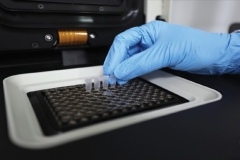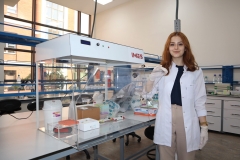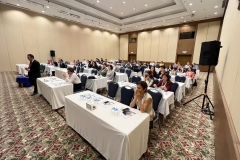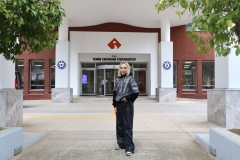
FACULTY OF ENGINEERING
Department of Biomedical Engineering
MATH 462 | Course Introduction and Application Information
| Course Name |
Applied Statistics
|
|
Code
|
Semester
|
Theory
(hour/week) |
Application/Lab
(hour/week) |
Local Credits
|
ECTS
|
|
MATH 462
|
Fall/Spring
|
3
|
0
|
3
|
7
|
| Prerequisites |
None
|
|||||
| Course Language |
English
|
|||||
| Course Type |
Elective
|
|||||
| Course Level |
First Cycle
|
|||||
| Mode of Delivery | - | |||||
| Teaching Methods and Techniques of the Course | DiscussionQ&ALecture / Presentation | |||||
| Course Coordinator | - | |||||
| Course Lecturer(s) | ||||||
| Assistant(s) | ||||||
| Course Objectives | This course provides essential materials for analyzing statistical data appear in various fields of social and phsical sciences. |
| Learning Outcomes |
The students who succeeded in this course;
|
| Course Description | This course provides several basic methods for analyzing statistical data appear in various fields of science. |
|
|
Core Courses |
X
|
| Major Area Courses | ||
| Supportive Courses | ||
| Media and Management Skills Courses | ||
| Transferable Skill Courses |
WEEKLY SUBJECTS AND RELATED PREPARATION STUDIES
| Week | Subjects | Related Preparation |
| 1 | Importance of describing data and summarizing descriptive relationships | You need to follow the lecture notes. |
| 2 | Obtaining meaningful data, presenting data. Data presentation errors | You need to follow the lecture notes. |
| 3 | Descriptive Measures: Measures of central tendency, measures of variability | You need to follow the lecture notes. |
| 4 | Measures of relative location | You need to follow the lecture notes. |
| 5 | Methods for detecting Outliers, obtaining bivariate linear relationships | You need to follow the lecture notes. |
| 6 | General principles for analyzing data: Concept of sampling, unbiasedness and minimum variance, the sampling distribution of the sample mean and the Central Limit Theorem | You need to follow the lecture notes. |
| 7 | General principles for analyzing data: Single sample estimation with confidence intervals and tests of hypothesis | You need to follow the lecture notes. |
| 8 | General principles for analyzing data: Two samples estimation with confidence intervals and tests of hypothesis | You need to follow the lecture notes. |
| 9 | Design of experiments | You need to follow the lecture notes. |
| 10 | Analysis of variance | You need to follow the lecture notes. |
| 11 | Simple linear regression | You need to follow the lecture notes. |
| 12 | Multiple regression and model building | You need to follow the lecture notes. |
| 13 | Categorical data analysis | You need to follow the lecture notes. |
| 14 | Some selected topics and applications | You need to follow the lecture notes. |
| 15 | Semester Review | |
| 16 | Final Exam |
| Course Notes/Textbooks | The extracts above and exercises will be given |
| Suggested Readings/Materials | “Statistical Techniques for Data Analysis” by J.K. Taylor and C. Cihon, Chapman and Hall/CRC, 2nd Edition, 2004. ISBN: 9781584883852 |
EVALUATION SYSTEM
| Semester Activities | Number | Weigthing |
| Participation | ||
| Laboratory / Application | ||
| Field Work | ||
| Quizzes / Studio Critiques | ||
| Portfolio | ||
| Homework / Assignments | ||
| Presentation / Jury |
1
|
10
|
| Project |
1
|
20
|
| Seminar / Workshop | ||
| Oral Exams | ||
| Midterm |
1
|
30
|
| Final Exam |
1
|
40
|
| Total |
| Weighting of Semester Activities on the Final Grade |
3
|
60
|
| Weighting of End-of-Semester Activities on the Final Grade |
1
|
40
|
| Total |
ECTS / WORKLOAD TABLE
| Semester Activities | Number | Duration (Hours) | Workload |
|---|---|---|---|
| Theoretical Course Hours (Including exam week: 16 x total hours) |
16
|
3
|
48
|
| Laboratory / Application Hours (Including exam week: '.16.' x total hours) |
16
|
0
|
|
| Study Hours Out of Class |
14
|
4
|
56
|
| Field Work |
0
|
||
| Quizzes / Studio Critiques |
0
|
||
| Portfolio |
0
|
||
| Homework / Assignments |
0
|
||
| Presentation / Jury |
1
|
15
|
15
|
| Project |
1
|
20
|
20
|
| Seminar / Workshop |
0
|
||
| Oral Exam |
0
|
||
| Midterms |
1
|
32
|
32
|
| Final Exam |
1
|
39
|
39
|
| Total |
210
|
COURSE LEARNING OUTCOMES AND PROGRAM QUALIFICATIONS RELATIONSHIP
|
#
|
Program Competencies/Outcomes |
* Contribution Level
|
||||
|
1
|
2
|
3
|
4
|
5
|
||
| 1 | To have adequate knowledge in Mathematics, Science and Biomedical Engineering; to be able to use theoretical and applied information in these areas on complex engineering problems. |
X | ||||
| 2 | To be able to identify, define, formulate, and solve complex Biomedical Engineering problems; to be able to select and apply proper analysis and modeling methods for this purpose. |
X | ||||
| 3 | To be able to design a complex system, process, device or product under realistic constraints and conditions, in such a way as to meet the requirements; to be able to apply modern design methods for this purpose. |
X | ||||
| 4 | To be able to devise, select, and use modern techniques and tools needed for analysis and solution of complex problems in Biomedical Engineering applications. |
X | ||||
| 5 | To be able to design and conduct experiments, gather data, analyze and interpret results for investigating complex engineering problems or Biomedical Engineering research topics. |
X | ||||
| 6 | To be able to work efficiently in Biomedical Engineering disciplinary and multi-disciplinary teams; to be able to work individually. |
|||||
| 7 | To be able to communicate effectively in Turkish, both orally and in writing; to be able to author and comprehend written reports, to be able to prepare design and implementation reports, to present effectively, to be able to give and receive clear and comprehensible instructions. |
|||||
| 8 | To have knowledge about global and social impact of Biomedical Engineering practices on health, environment, and safety; to have knowledge about contemporary issues as they pertain to engineering; to be aware of the legal ramifications of engineering solutions. |
|||||
| 9 | To be aware of ethical behavior, professional and ethical responsibility; to have knowledge about standards utilized in engineering applications. |
|||||
| 10 | To have knowledge about industrial practices such as project management, risk management, and change management; to have awareness of entrepreneurship and innovation; to have knowledge about sustainable development. |
|||||
| 11 | To be able to collect data in the area of Biomedical Engineering, and to be able to communicate with colleagues in a foreign language. |
|||||
| 12 | To be able to speak a second foreign language at a medium level of fluency efficiently. |
|||||
| 13 | To recognize the need for lifelong learning; to be able to access information, to be able to stay current with developments in science and technology; to be able to relate the knowledge accumulated throughout the human history to Biomedical Engineering. |
|||||
*1 Lowest, 2 Low, 3 Average, 4 High, 5 Highest
NEWS |ALL NEWS

Biomedical Engineering Erasmus Agreement was signed with Universidad Jaume University, Spain
The signing process for the agreement with Universidad Jaume for Biomedical Engineering has been completed. Our students can add this university to

OCCUPATIONAL HEALTH AND SAFETY TRAINING
Within the scope of BME 318 course, an Occupational Health and Safety Seminar was given to Biomedical Engineering students by our University's

An Oligonucleotide Story by Assoc. Prof. Dr. Osman DOLUCA
Within the scope of the Biomedical symposium organized by İzmir Katip Çelebi University Biomedical Society, our department chair, Assoc. Prof. Dr. Osman

Projects were entitled to receive support within the scope of the TÜBİTAK 2209-A
We congratulate our students and wish them continued success.

Important breakthrough in virus detection
Assoc. Prof. Dr. Osman Doluca, Acting Head of Department of Biomedical Engineering, Izmir University of Economics (IUE), reported that they have developed

'Smart cabinet' against the virus
Assoc. Prof. Dr. Osman Doluca and his 4 students from Izmir University of Economics (IUE) developed a 'PCR cabinet' that allows samples




